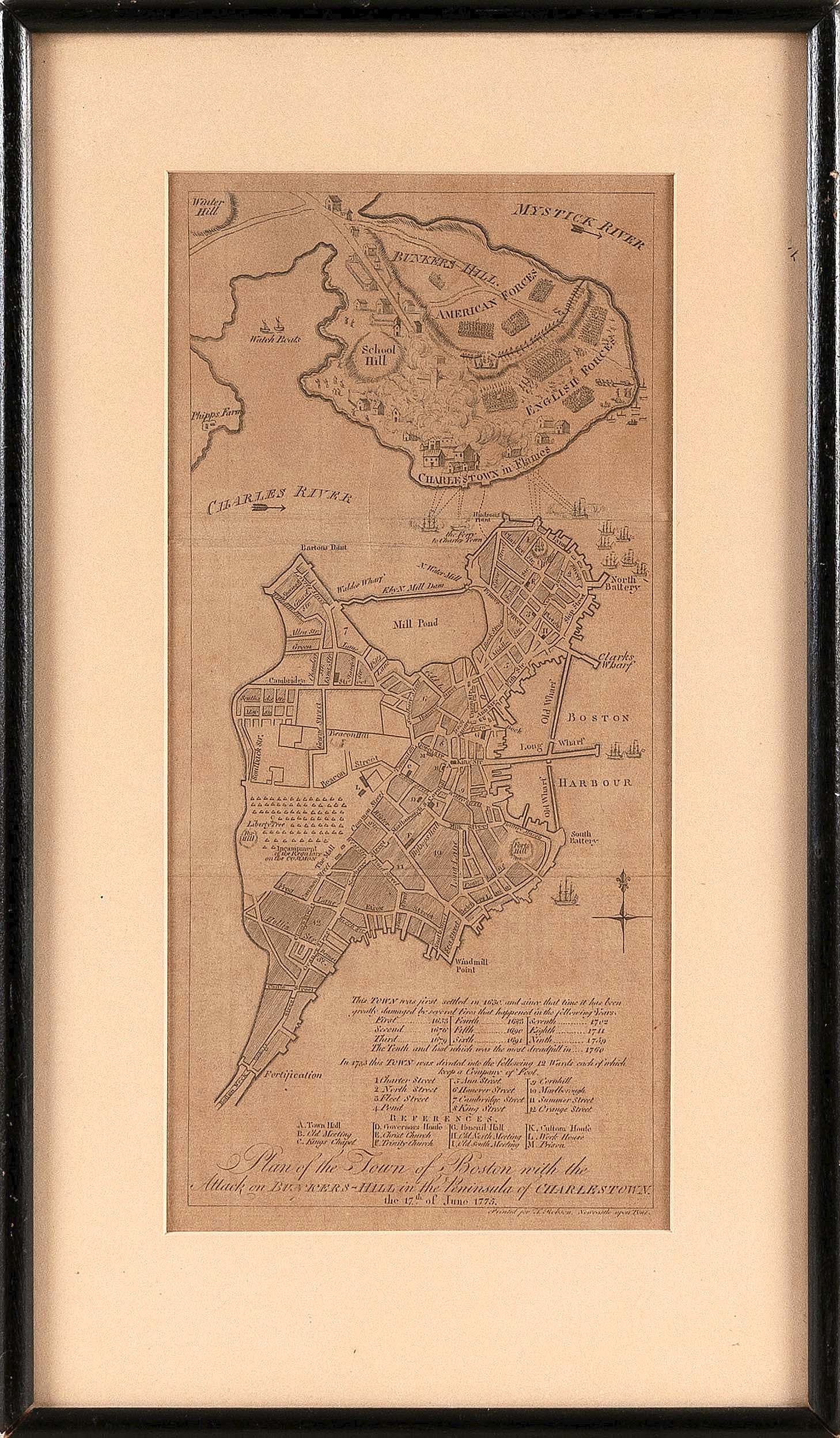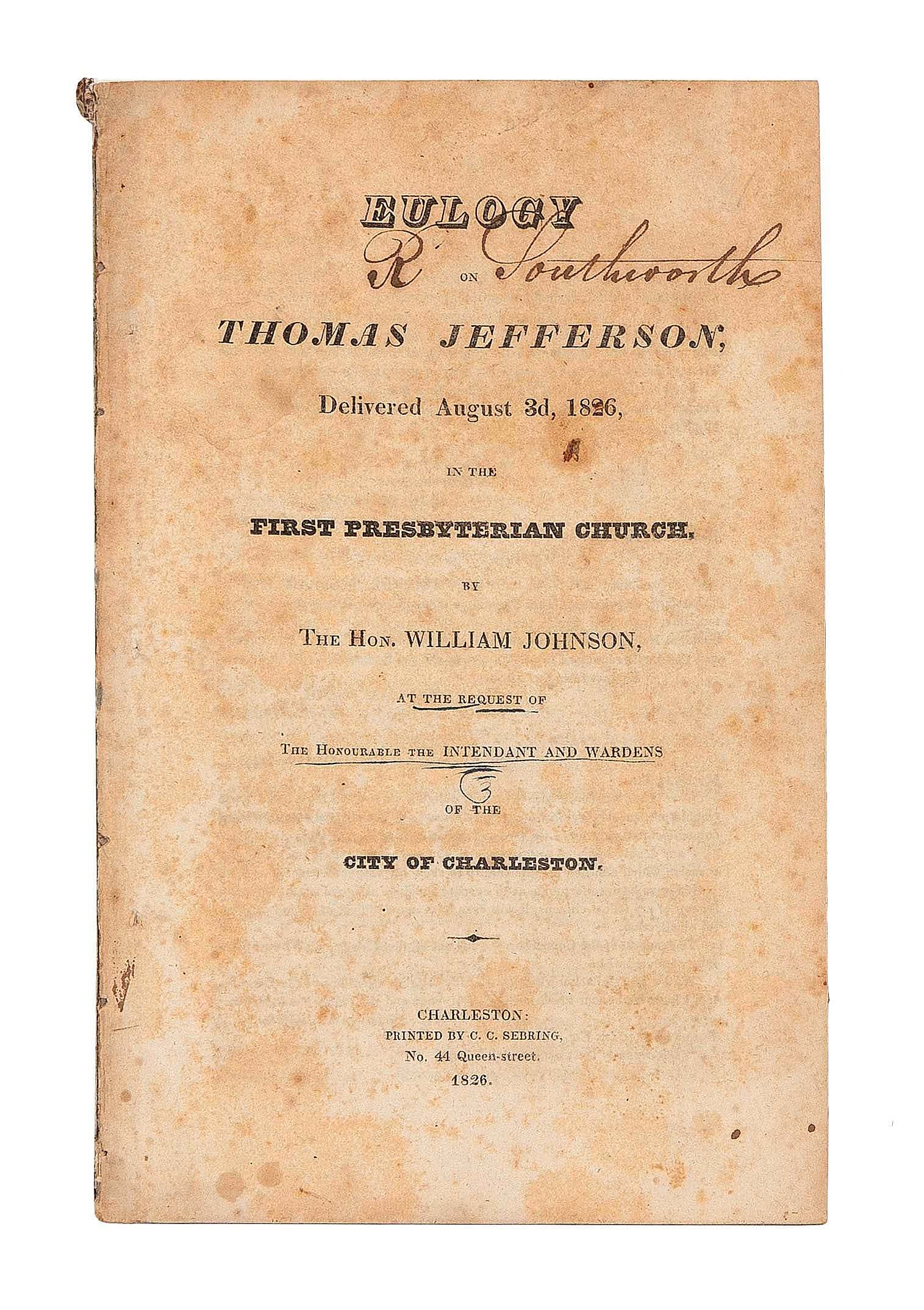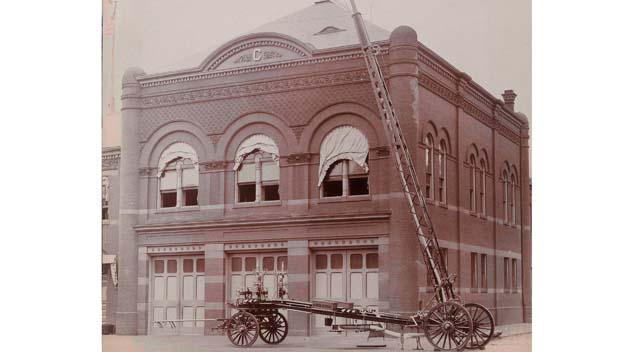#Books #Historic #Ephemera #Success #Eldreds #Antiques #Arts #Weekly

The highest-achieving lot was this Nineteenth Century photographic trade album for Fire Extinguisher Manufacturing Co., Chicago, cloth covered album containing 129 albumen or early silver bromide photographs and two blueprints, album: 15½ inches wide by 11½ inches high by 2½ inches thick; it sold to a trade buyer for $5,120 ($4/6,000).
Review by Carly Timpson
EAST DENNIS, MASS. — Books and historic ephemera were the categorical stars of Eldred’s June 26 auction. Cheryl Stewart, Eldred’s head of marketing, shared that “Much of the sale was sourced from two private consignors who have been selling with Eldred’s for many years. Overall, we were pleased with the results of today’s sale and pleasantly surprised at the hammer price of a few of the items.” With 126 lots offered, the sale realized just under $43,000 and had a 79 percent sell-through rate with “82 registered absentee, phone and Eldreds.com bidders, plus several hundred others participating on LiveAuctioneers and Invaluable.”
Rising to the top of the auction, a photographic trade album for the Chicago-based Fire Extinguisher Manufacturing Company. Selling to a trade buyer after rising to $5,120, the album, which documented “firefighting equipment used during the waning days of the horse-drawn firetruck era,” included 129 photographs and two equipment blueprints. Stewart said, “The pictures were really crisp and pretty interesting, even if you aren’t interested in fire memorabilia — some of them were taken on the street, showing firefighters climbing ladders up to windows or putting out house fires.” The original cloth-covered album was titled in gilt lettering and affixed with an engraved silver plaque with the name of the company’s superintendent: “E.F. Steck, Sup’t.” The auction catalog notes that the 13¾-by-11-inch photographs, probably contact prints, were most likely taken by an 11 by 14 view camera.
Five volumes of early Journals of Congress, dated from 1777 to 1787, were sold to a private collector, just over their high estimate of $1,500, for $2,304. The texts included: Volume III, containing the proceedings from January 1, 1777 to January 1, 1778 (New York: John Patterson); Volume V, containing the proceedings from January 1, 1779 to January 1, 1780 (Philadelphia: David C. Claypoole, 1782); Volume VII, for the year 1781 (New York: John Patterson, 1787); Volume VIII, containing the proceedings from the first Monday in November 1782 to the first Monday in November 1783 (Philadelphia: David C. Claypoole, 1783); and Resolutions, Acts and Orders of Congress, 1780.

Five volumes of early journals of Congress, dating from 1777 to 1783, 8¼ by 5 inches each, exceeded their estimates to bring $2,304 ($1/1,500).
Other books that did well included a collection of 32 navigation and mathematics books and a set of eight relating to New England. The earliest book from the navigation and mathematics set was the 1750 Navigatio Britannica: or a Complete System of Navigation by J. Barrow (London: W. and J. Mount and T. Page). The most recent was The Sea, Books and Manuscripts (Philadelphia: The Rosenbach Company, 1938). Other notable titles included The Merchant’s and Shipmaster’s Assistant by Joseph Blunt (New York: Edmund M. Blunt, 1822), and the second edition of A New and Complete System of Arithmetic by Nicholas Pike (Worcester: 1797). Together, the 32 books sold for $896.
The New England text collection, which sold for $832, included two volumes of The History of Vermont by Samuel Williams (1809), two volumes of Winthrop’s History of New England by James Savage, Vermont: The American Guide Series (1937) and three volumes of History of New Hampshire by Belknap (1784, 1791 and 1792).
Stewart shared, “We’ve held several historic and political memorabilia auctions over the past 10 years and have found early American documents and imprints — dated before 1825 — usually perform the best. They are scarce, which makes them desirable and valuable, but they are also very challenging to estimate because you can almost never find comps on which to base presale estimates.”

This 1793 document appointing Samuel Noyes to the rank of ensign was signed by Samuel Adams and was filled by his secretary John Avery. With a University Archives authentication certificate, the document was bid to $2,176 ($2/3,000).
As such, a partially printed military appointment document “By his honor Samuel Adams, Esq., Lieutenant-Governor and Commander in Chief of the Commonwealth of Massachusetts” was filled in by the hand of John Avery, Adams’ secretary. The 1793 document was signed to the upper left “Saml Adams” and was paired with a certificate of authenticity for the signature from University Archives, Wilton, Conn. The certificate was appointing Samuel Noyes to the rank of ensign “in the First Regiment of the Second Brigade / Second Division of the Militia of this Commonwealth.” The authentic signed document sold, within its estimate range, for $2,176.
Once belonging to Andrew L. Hill and “purportedly descended in the family of the consignor,” per Stewart, an Eighteenth Century Masonic apron soared past its $400 high estimate and sold to the trade for $1,920. Despite its tattered state, Stewart shared her assumption that “the early date helped bidders overlook the stained and worn condition of the apron silk.” According to The Grand Lodge of Ohio, “An apron, also commonly called the ‘badge of a Mason,’ is the first gift a new Brother receives, and serves to remind us of our connection to the craft and of our fraternity’s symbolic association with the working stonemasons of old.” This apron, with its light blue trim and symbolic images, was likely representative of Hill’s status in the organization, given the fact that “as a member completes the remaining two degrees, some jurisdictions add decorations of light blue and silver to the apron.”

This framed map detailing the “Plan of the town of Boston with the attack on Bunkers-Hill in the peninsula of Charlestown the 17th of June 1775” was from James Murray’s An Impartial History of Present War in America (1778). Measuring 16½ by 9½ inches framed, the toned map sold to a trade buyer for $1,664 ($300/500).
A framed map with the inscription “Plan of the town of Boston with the attack on Bunkers-Hill in the peninsula of Charlestown the 17th of June 1775,” was from James Murray’s An Impartial History of Present War in America (Newcastle Upon Tyne, 1778). In this text, Murray wrote of the lead up to that battle: “The critical situation of Boston, the capital of the province; was an object of much consideration, nor was it easy to determine in what manner to provide for the safety of the inhabitants, and to prevent the town becoming a thorn of uneasiness to the province, if matters should come to the last extremity…Force was the only expedient that could be pursued with a probability of success; but they were not yet determined to proceed to that extremity.” The map showed several key details, including historic fires that damaged Boston, the 12 wards of the city and critical reference points, including “Town Hall,” “Kings Chapel” and “Governors House.” Most notably, the peninsula of Charlestown — where Bunker Hill is located — was heavily detailed with images of “American Forces” and “English Forces” in battle just north of billowing smoke and text that read “Charlestown in Flames.” Additionally, several ships, including “the Ferry to Charles Town” were also aflame. Consigned by a private collector, it was sold to the trade for $1,664 on a $300/500 estimate.
The front page of the March 10, 1774, edition of the newspaper, Massachusetts Sun Or, Thomas’s Boston Journal, sold for $1,152 on a $150/250 estimate. Stewart remarked that the framed sheet was generally in good condition for its age, came from a private consignor and sold to the trade.
One of the sale’s most hotly contested items was “Eulogy on Thomas Jefferson” by William Johnson (Charleston: C.C. Sebring, 1826). Stewart thinks that “early Charleston imprints are pretty rare and probably pretty desirable,” which led to this copy being bid to $1,088. Signed “R. Southworth” in ink on the top of the title page and first page, it was from a private consignor and sold to a private buyer.

A copy of William Johnson’s (1771-1834) August 3, 1826, “Eulogy on Thomas Jefferson,” printed by C.C. Sebring (Charleston, S.C.) in 1826, 8½ by 5¼ inches, made $1,088 ($150/250).
In closing, Stewart commented, “We find these types of sales take a while to build — both getting in the appropriate number of consignments and the time-consuming research often required in cataloging the material — so we don’t have them seasonally scheduled like we do for many of our auctions in other collecting categories, but we enjoy handling this type of material and look forward to continuing to develop this department. There’s something really humbling and awe-inspiring about holding a piece of history in your hands.”
Prices quoted include the buyer’s premium as reported by the auction house. Eldred’s next auction, American Art & The Summer Sale, will be July 24-26. For information, www.eldreds.com or 508-385-3116.




